White Hill, north of Ephraim, Utah. Research Days 3-4 (July 12-13).
In the Green River Formation exposed in the Sanpete Valley, there are numerous large and small quarries that provide excellent exposures of the unit. In some places, the Green River contains massive bedding — perfect as quarry stone for buildings in the area.
Over the course of these next few days, we measured a 175 ft stratigraphic section through the Upper Member of the Green River Formation in one quarry, but then moved on to measure additional stratigraphic sections through three additional quarries. By the end of the two days, Phil and Bill were becoming experts at measuring sections.
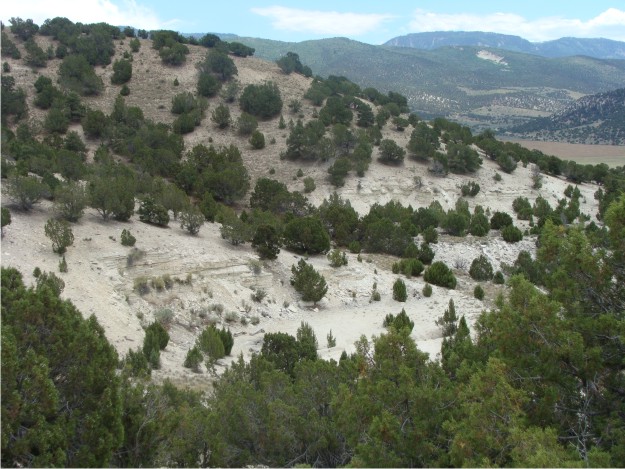
Here is a scenic view of a portion of White Hill that contains two quarries. These quarries, although small, provided evidence of the shoreline of the Green River lake in this area.
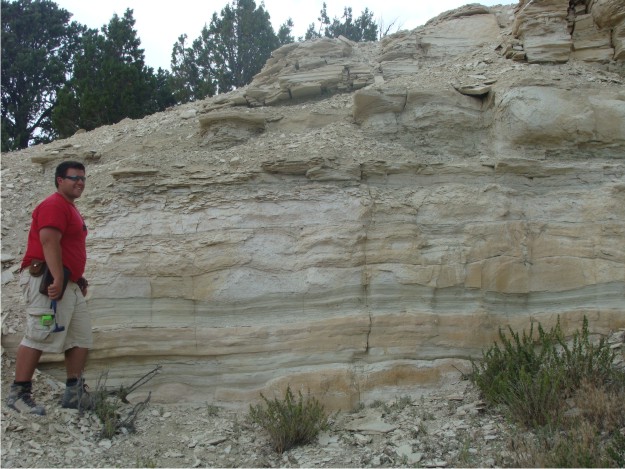
Bill is at the edge of one of the small quarries, trying to find both stromatolite beds and mudcracks within the Green River.
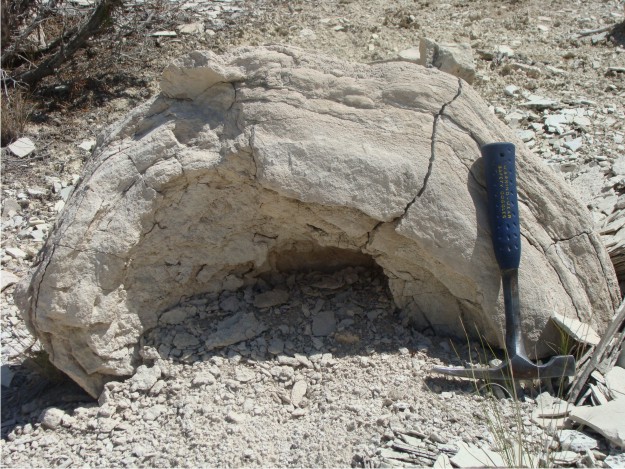
Some of the stromatolites in the Green River are only a few inches in height; others -- like the one pictured above -- are quite large and easier to recognize.
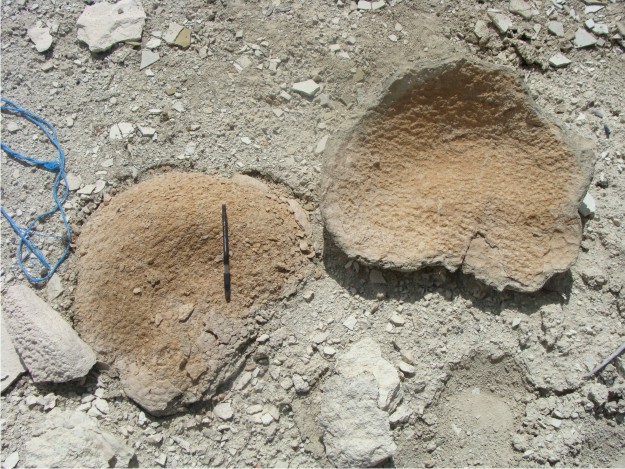
View of the top of one of the larger stromatolites (pencil for scale). For some of the loose stromatolites, we could actually peal back the individual layers to see the textural features.
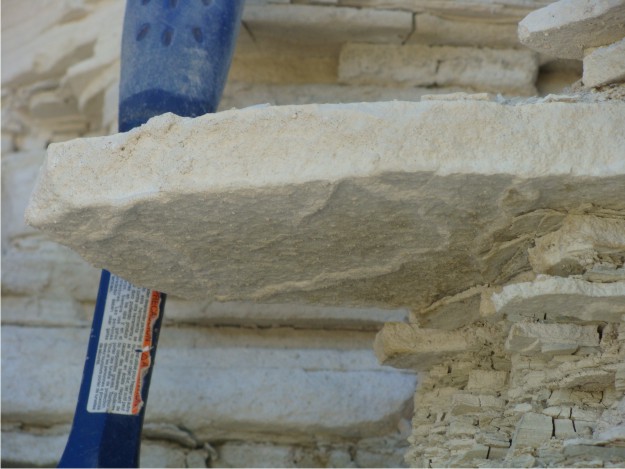
View of the underside of the elusive mudcracks that we tried to find in situ. Mudcracked slabs were abundant as float, but they proved to be difficult to find in place due to the platy bedding in the quarries.
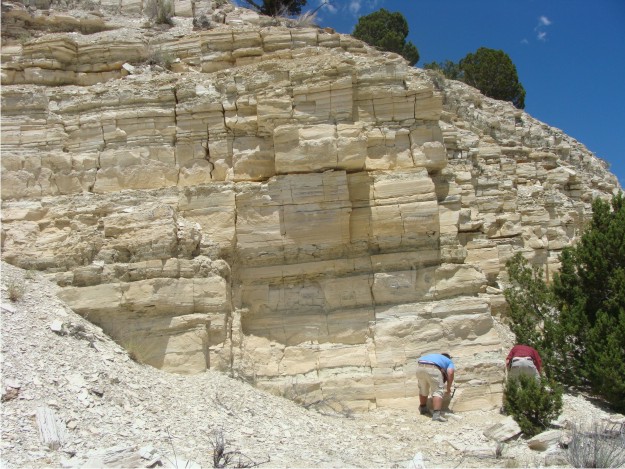
Here's a view of one of the larger quarries on White Hill. Bill and Phil are in the photo for scale.
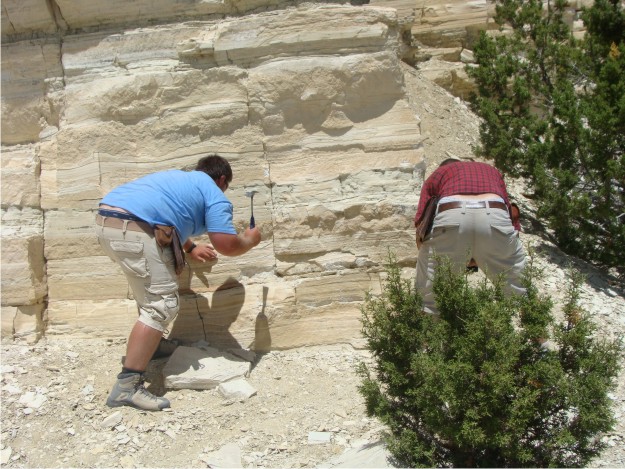
The guys are busy trying to "mine out" a thin green tuff bed within the limestones of the Green River. As Phil put it, finding this green tuff was "money", because it will help us correlate this quarry to other stratigraphic sections in the area.
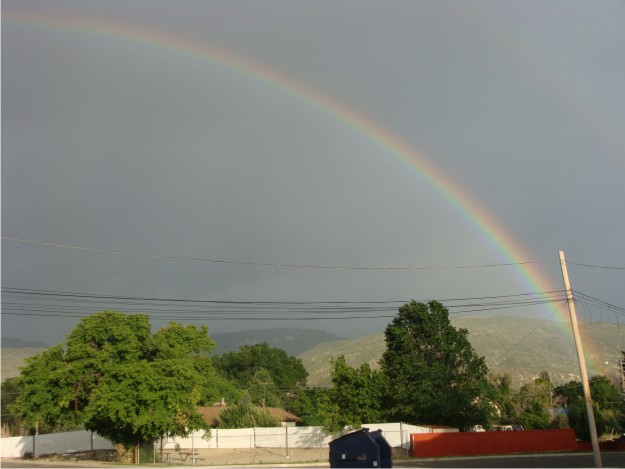
We ended the days working in the quarries with a beautiful double rainbow back at the Ephraim apartments in the evening, shortly after dinner.


